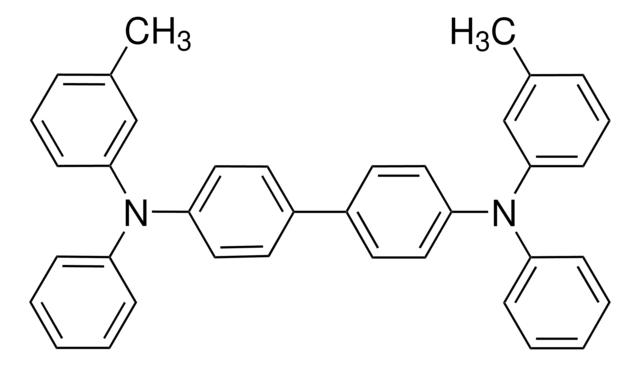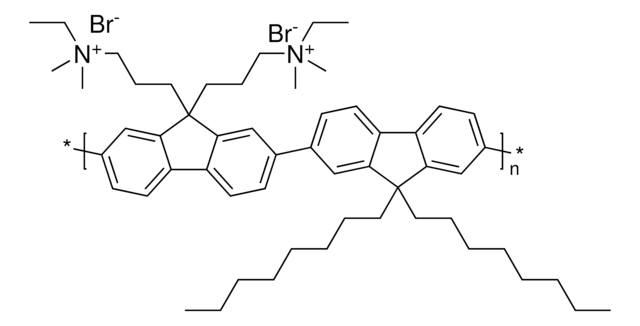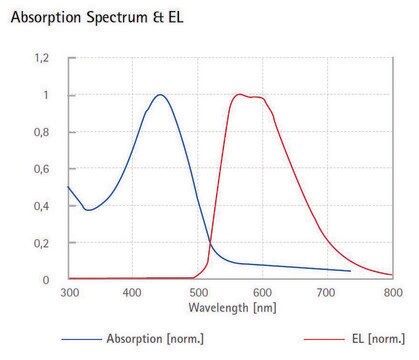901101
TFB
Synonym(s):
Poly[(9,9-dioctylfluorenyl-2,7-diyl)-co-(4,4′-(N-(4-sec-butylphenyl)diphenylamine)]
About This Item
Recommended Products
form
powder
Quality Level
mol wt
average Mw >30,000 by GPC
greener alternative product characteristics
Design for Energy Efficiency
Learn more about the Principles of Green Chemistry.
sustainability
Greener Alternative Product
color
yellow
mp
>300 °C
greener alternative category
, Enabling
SMILES string
CCCCCCCCC1(CCCCCCCC)C2=C(C=CC(C3=CC=C(N(C4=CC=C(C(CC)C)C=C4)C5=CC=C(C)C=C5)C=C3)=C2)C6=C1C=C(C)C=C6
InChI
1S/C53H67N/c1-7-10-12-14-16-18-36-53(37-19-17-15-13-11-8-2)51-38-41(5)22-34-49(51)50-35-27-45(39-52(50)53)44-25-32-48(33-26-44)54(46-28-20-40(4)21-29-46)47-30-23-43(24-31-47)42(6)9-3/h20-35,38-39,42H,7-19,36-37H2,1-6H3
InChI key
LMXSDGRJIJNLIY-UHFFFAOYSA-N
Looking for similar products? Visit Product Comparison Guide
General description
Application
Storage Class Code
11 - Combustible Solids
WGK
WGK 3
Flash Point(F)
Not applicable
Flash Point(C)
Not applicable
Choose from one of the most recent versions:
Certificates of Analysis (COA)
Don't see the Right Version?
If you require a particular version, you can look up a specific certificate by the Lot or Batch number.
Already Own This Product?
Find documentation for the products that you have recently purchased in the Document Library.
Customers Also Viewed
Articles
Advances in the area of soft optoelectronics, with a focus on the development of organic optoelectronic devices on shape memory polymers (SMP) is discussed.
Our team of scientists has experience in all areas of research including Life Science, Material Science, Chemical Synthesis, Chromatography, Analytical and many others.
Contact Technical Service










